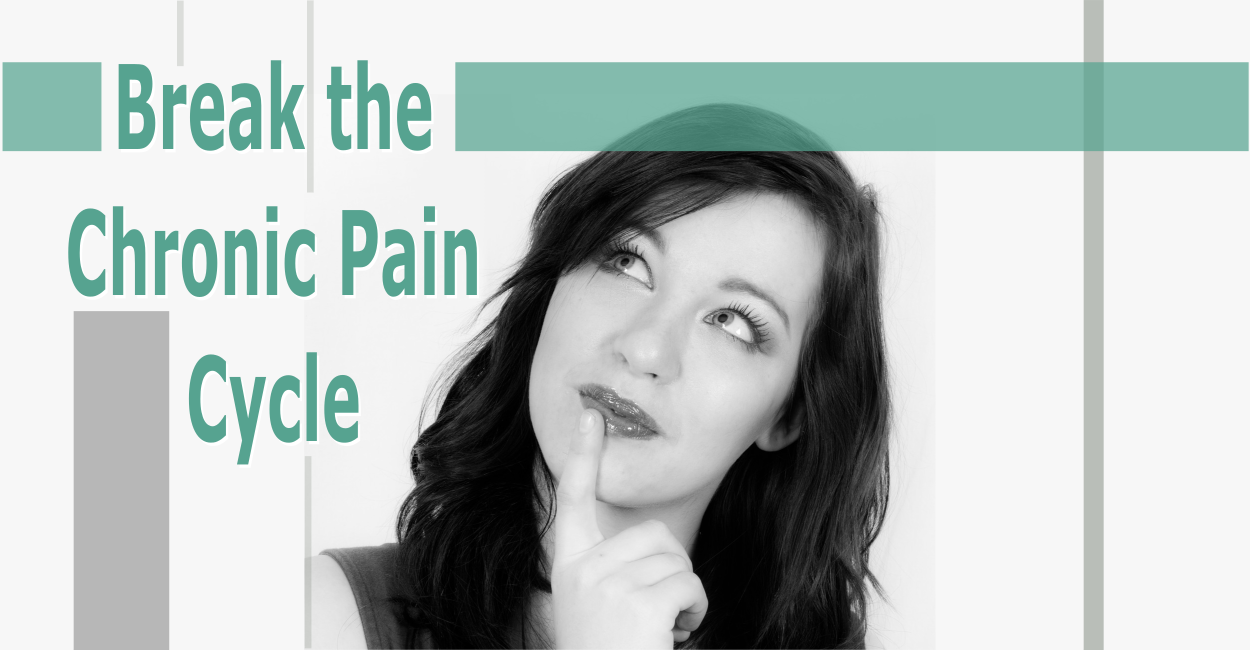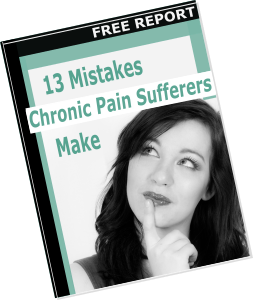
Break the Chronic Pain Cycle
Wondering How to Break the Chronic Pain Cycle?
For those struggling with chronic pain, this article may offer some answers as well as safe and effective solutions.
If you’ve read past articles, you may remember that I’ve struggle with chronic pain as a teenager and young adult. Finding solutions wasn’t easy. I spent many years learning natural and holistic practices to better support my health. Some worked better than others but persistence gave me solutions.
In my journeys I also discovered I had a passion for learning about holistic health and natural healing. Now I’m able to put that all together and I want to share it with you.
Let’s first define acute vs chronic pain. Acute pain lasts a short time (days & weeks) vs the more persistent, chronic pain lasting weeks, months and years.
Pain is a message to the brain signaling that there is something wrong in the body. Testing is a great start to understanding your chronic pain. After blood tests, MRI’s and x-rays, some forms of chronic pain can be explained and treated. But, the cause of other chronic, painful conditions remains unknown, which is the focus of this article.
Some chronic pain goes on endlessly and appears to have no answers or solutions from conventional medicine.
We need understanding before we can find solutions.
Traditional Chinese Medicine (TCM) defines pain as a block to circulation. TCM defines good health as the sufficient circulation of nutrient and oxygen-rich blood through the body. Good circulation also helps distribute important body chemicals like hormones and the removal of toxins.
So treatment for chronic pain should aim to open and maintain good circulation for a sufficient amount of time for the body to heal. This knowledge helps use make the right choices in therapy, prevention and self-care.
Learn More About Acupuncture --> Read these 2 Articles
Here’s the next question to get you on a better path for healing:
What is blocking your circulation and causing your chronic pain?
3 Concepts to Break the Chronic Pain Cycle
- 1. Identify the Block and Origin of Chronic Pain
- 2. Open Circulation
- 3. Learn to Stay Pain Free
1. Identify the Block and Origin of Chronic Pain
Some people can identify exactly when and how the chronic pain began but others can’t. Some injuries, like a fall or heavy lifting, can be an easily identified source but other causes are not so obvious.
Here are some less obvious examples; years of poor posture could be a cause of chronic pain. High stress can rattle the nerves and exhaust the body’s ability to rejuvenate and lead to chronic pain. An unusual busy work period or the emotional trauma from a loved one passing is highly stressful and can result in chronic pain.
Mental-emotional stress rattles the nervous system and can be a typical cause of sciatica or pain from the low back typically radiating down one leg.
Exhaustion makes it hard for the body to recover. A long period of rehabilitation is needed but too often not possible or ignored. A supportive diet, proper rest, rejuvenating sleep, less physical, mental or emotional strain all together needs to be considered for a proper and full recovery.
Just taking a pain pill so you can continue to plow through your stressful lifestyle could prove to drain your health further and lead to more serious health issues.
Be aware of potential causes chronically blocking circulation which may develop into chronic pain: heavy lifting, repetitive movement, physical weakness, limited range of motion (poor joint health), holding muscle tension, emotional imbalances (anxiety, depression), poor sleep habits, toxic diet lacking nutrients, physical or mental trauma, weather changes and more…
In addition, a poor diet heavy on sugar and carbohydrates like bread, pasta and potatoes as examples can lead to weight gain, dysregulate hormones and weaken the body. Chronic pain can develop out of poor diet habits. Consider seeking professional advice to develop a diet plan specific to your health needs. Learning which foods reduce inflammation and which foods cause inflammation is a good place to start.
Emotional eating can cause unhealthy weight gain setting the body up for future health issues and possible struggles with chronic pain. A better diet and improved eating habits can help but professional counseling to support mental-emotional health is best to get to the root of the matter.
Conventional tests are important to rule out other causes of your chronic pain. Getting a medical exam to explore past illnesses, injuries, and surgeries can expand your understanding.
Also, there are a variety of tests that are important in ruling out any health problems. Blood tests can identify infections or other pain-causing conditions. Imaging tests, such as X-rays, CT scans, MRIs or ultrasounds, take pictures of structures inside your body searching for disease or injury. EMG (Electromyogram) and nerve conduction studies can measure muscle and nerve function to identify if there is a muscle or nerve problem.
Record a pain diary to observe your chronic pain particularly when undergoing therapy. Sometimes improvement can be slow and overlooked so use your pain diary to keep track of benefits and outcomes.
Click and print out my Weekly Pain Tracker Chart
record your pain levels to track the benefits and outcomes of any therapies and self-care techniques.
There’s too much to explore for this article but if you want a quicker path it’s best to seek professional help to fully identify the source of your chronic pain.
2. Open Circulation
Open circulation implies unblocking the flow of blood and qi (energy) to nourish the affected body region, reduce pain, inflammation and toxic buildup.
I’m bias, acupuncture and herbal medicine are my favorite therapies for unblocking circulation. Opening circulation is exactly what acupuncture does. TCM defines pain as a block and has developed tools, over thousands of years, like acupuncture to gently stimulate the body to open circulation. TCM principles, embodied in Chinese herbal medicine, also helps open circulation with an added bonus of nourishing the body and removing toxins.
Some constrictive therapies like braces, wraps and ice (cold therapy) may work against opening circulation for optimal healing.
Good joint health depends on good joint movement to encourage circulation through the joint structure. Lack of joint movement can lead to weak musculature supporting joints. Such weakness can lead to injuries.
Excessive joint movement can irritate joint tissue causing inflammation and swelling. Circulation becomes blocked. The affected joint degrades in health due to lack of oxygen, nutrients and a buildup of toxins.
Chronic pain from arthritis can result from limited or excessive movement because the lack of nourishment can weaken and deformed the joint structure.
A persistent and fatiguing posture can lock tension into muscles blocking circulation and causing chronic pain.
Chronic emotional tension can embed into muscle tissue and transform into a physical muscle memory. This retained tension in the muscles blocks circulation even though there’s no physical activity causing muscles to contract and tighten.
Exercise, stretching, knowing your limits movement-wise and stress management to address negative mental/emotional energy patterns can all be helpful in promoting circulation and optimizing health. The keys to optimal health and good circulation are 1. Consistency 2. Nothing in excess and everything in moderation. Marathon runners and couch potatoes beware!
3. Learn to Stay Pain Free
When the pain is gone, some people return to their old habits. Always remember, just because your chronic pain is gone doesn’t mean you’re trouble-free. That area of the body may always hold a weakness that you will need to strengthen and protect to prevent chronic pain from reoccurring.
Stay alert and be aware. Don’t let yourself go. Don’t lose focus of your health. Develop consistent and moderate self-care practices that encourage circulation to keep you pain free.
Self-care practices I recommend should be focused on harmonizing the mind, body and breath. Examples are tai chi, chi kung, yoga, meditation, and other stress management practices.
Slow and steady wins the race. You want to stay in the game, right? Recognizing causes of chronic pain, pacing yourself, taking breaks, making corrections and seeking professional guidance will keep you healthier as a traveler through the game of life.
Thank you so much for reading the article!
I hope you've found it informative?
Would you like to share your story, ask questions and leave comments?
Please do so below in the comment box.
If you or someone you know struggles with Chronic Pain
you’ll want to get my FREE report below

Stay Informed
Request My FREE Report
13 Mistakes Chronic Pain Sufferers Make

Dr. Christopher Carlow, D. Ac. Doctor of Acupuncture
Dr Chris is a Doctor of Acupuncture, licensed in the state of Rhode Island with a holistic acupuncture and wellness clinic in Coventry, Rhode Island called Acupuncture and Herbal Medicine.
"I believe healthcare needs a more natural approach that places greater importance on self-care & early prevention. Greater health can be achieved through learning higher levels of personal awareness and early practices in prevention and self-care."